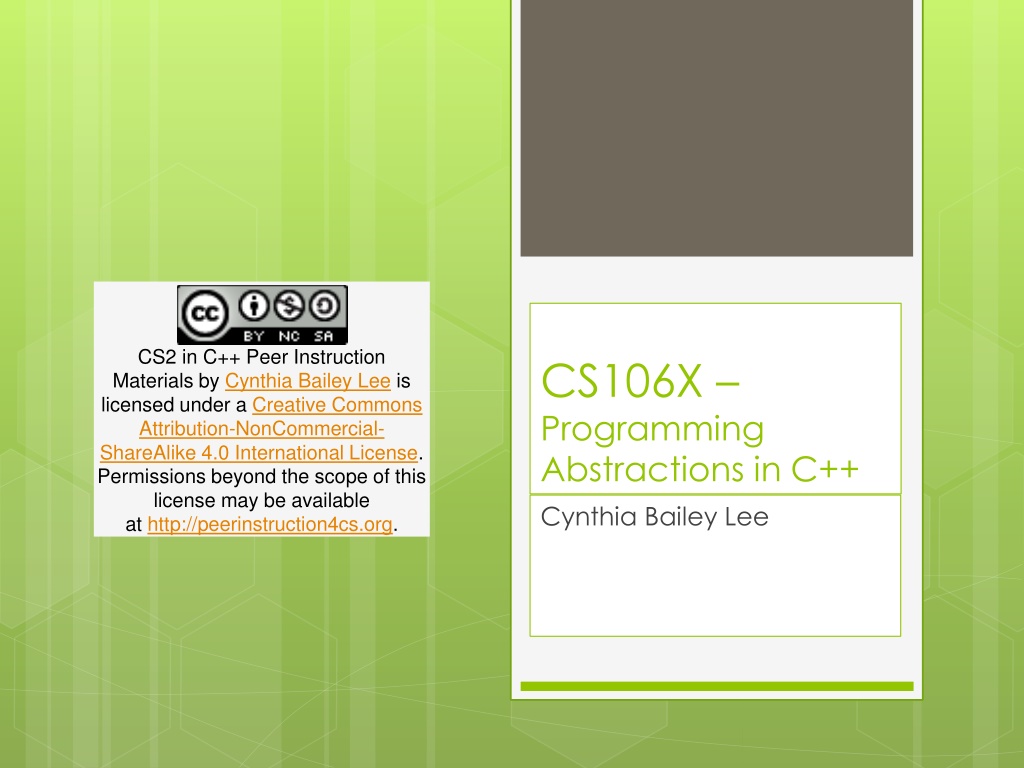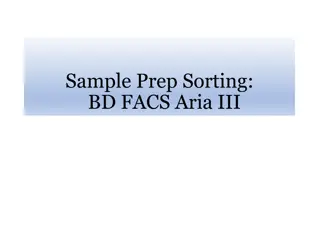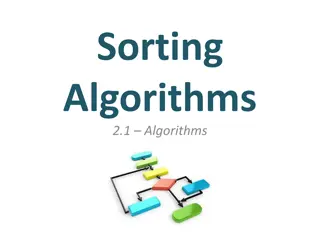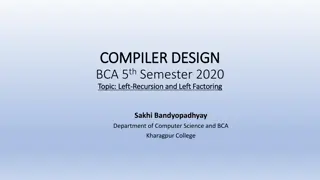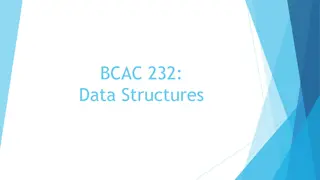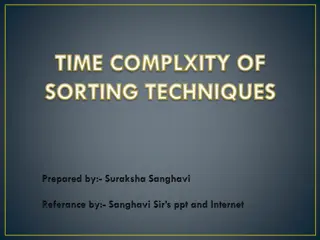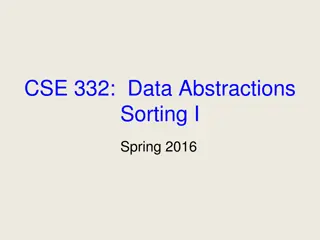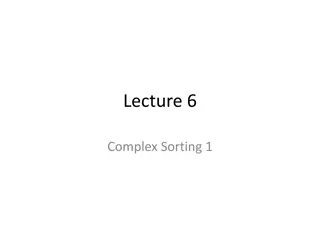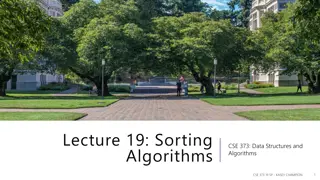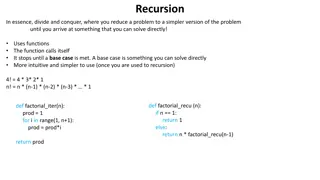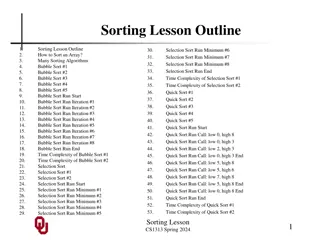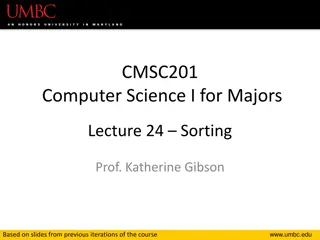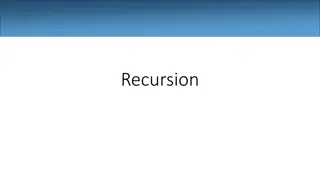Understanding Recursion and Sorting Algorithms in C++ Peer Instruction Materials
Explore the Traveling Salesman Problem, recursive sorting techniques like Merge Sort and Quick Sort, and the challenges of mapping algorithms versus human perception. Delve into the importance of Selection Sort and scenarios of worst vs. best cases in algorithms.
Download Presentation

Please find below an Image/Link to download the presentation.
The content on the website is provided AS IS for your information and personal use only. It may not be sold, licensed, or shared on other websites without obtaining consent from the author. Download presentation by click this link. If you encounter any issues during the download, it is possible that the publisher has removed the file from their server.
E N D
Presentation Transcript
Creative Commons License CS2 in C++ Peer Instruction Materials by Cynthia Bailey Lee is licensed under a Creative Commons Attribution-NonCommercial- ShareAlike 4.0 International License. Permissions beyond the scope of this license may be available at http://peerinstruction4cs.org. CS106X Programming Abstractions in C++ Cynthia Bailey Lee
2 Today s Topics: Recursion! 1. Question from Wednesday: What is the Traveling Salesman Problem? 2. Recursive sorting Merge sort Quick sort
Traveling Salesperson Problem
Map vs Matrix, Eye vs Algorithm The human eye/brain is pretty good at taking in a map picture and, considering many points in parallel, perceive routes that take advantage of nearby points Much harder for a computer to do when it has no idea where a point is without examining it individually
Map vs Matrix, Eye vs Algorithm The human eye/brain is pretty good at taking in a map picture and, considering many points in parallel, perceive routes that take advantage of nearby points Much harder for a computer to do when it has no idea where a point is without examining it individually Like how we can see that one should go over there!! in sorting: http://www.cs.usfca.edu/~galles/visualization/Com parisonSort.html
Speaking of sorting Sorting
Write code (or pseudocode) for Selection Sort
Aside: Worst case vs. Best case Remember Binary Search 0 2 1 7 2 8 3 13 4 25 5 29 6 33 7 51 8 89 9 90 10 95 Look at middle element: if too big, rule out right half and recursively search left; if too small, rule out left half and recursively search right; if correct element, WIN! If 0 elements left, LOSE!
Aside: Worst case vs. Best case Remember Binary Search 0 2 1 7 2 8 3 13 4 25 5 29 6 33 7 51 8 89 9 90 10 95 Best case: O(1) Search for 29 there it is! #winning Worst case: (a) O(1), (b) O(logn), (c) O(nlogn), (d) O(n), (e) Other/none/more
Analysis of Selection Sort What is the worst-case BigO running time for Selection Sort? Is the best case different? What makes a best/worst case for Selection Sort?
Sorting The Professor s Sorting Algorithm
Professors sorting algorithm: 1. Find two grad students, give each half of the unsorted midterms 2. Tell the grad students to sort their own pile, then give it back 3. Combine the two piles into one sorted pile, using our simple combine algorithm 4. Done!
Grad students sorting algorithm: 1. Find two SLs, give each half of the unsorted midterms 2. Tell the SLs to sort their own pile, then give it back to you 3. Combine the two piles into one sorted pile, using our simple combine algorithm 4. Done! (give your sorted pile to professor)
SLs sorting algorithm: 1. Find two class members, give each half of the unsorted midterms 2. Tell the floormates to sort their own pile, then give it back to you 3. Combine the two piles into one sorted pile, using our simple combine algorithm 4. Done! (SL gives sorted pile to grad student)
Class members sorting algorithm: 1. Pile only has one exam in it 2. Done! (class member gives sorted pile to SL)
Class members sorting algorithm: 1. Pile only has one exam in it 2. Done! (class member gives sorted pile to SL) Question: Why did we stop at one exam? Isn t the first trivial case we encounter the case of 2 exams?
Recursive Sorting MergeSort
Combine two sorted piles algorithm Start: you have two piles, each of which is sorted Take the smallest element of the two piles and add it to the combined-sorted pile Repeat until the two starting piles are empty and the combined-sorted pile is complete If one pile is empty and other is not, move from non-empty pile into sorted pile
I would like to move one paper from the two sorted sub-piles to the combined sorted pile. How many papers do I have to examine, at most, to identify the current smallest element of both sorted sub-piles? A. 2 elements B. 4 elements C. Size of the first pile D. Size of the second pile E. Other/none/more than one
How many steps does it take to fully merge two sorted sub-piles, A and B? (best/tight answer) A. O(log(A+B)) steps B. O(A+B) steps C. O(A+B)2 steps D. O(A2 + B2)steps E. Other/none/more than one
Consider an arbitrarily chosen (generic) particular exam and mentally track its progress throughout the algorithm. How many times does your exam pass through the merge step? A. 1 time B. 2 times C. (logn) times D. (n) times E. Other/none/more than one (Recall means the same as O but where the time is a best match, not a distant upper bound.)
BigO Analysis of Mergesort Every paper is merged log(n) times This is the number of times we can divide the stack of n papers by 2 before we can t divide anymore There are n papers O(nlogn)
